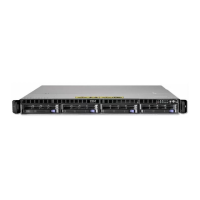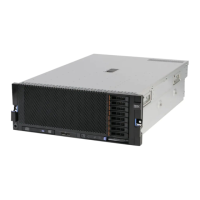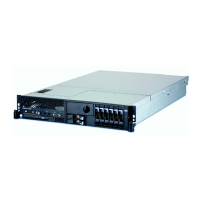I/O Drawer 5 EIA
This I/O drawer is used with several of the system CEC drawers. It is used as primary and secondary I/O
drawer for those systems.
Dimensions
Height 218.0 mm 8.6 in.
Width 445.0 mm 17.5 in.
Depth 820.0 mm 32.3 in.
Weight
Minimum configuration 41 kg 90 lbs.
Maximum configuration 52 kg 115 lbs.
Electrical
Power source loading (typical in kVA) 0.23
Power source loading (maximum in
kVA)
0.54
Voltage range 200 to 240 V ac
Frequency (hertz) 50 / 60
Thermal output (typical) 750 Btu/hr
Thermal output (maximum) 1750 Btu/hr
Power requirements (typical) 220 watts
Power requirements (maximum) 515 watts
Power factor 0.95
Inrush current³ 41 amps
Maximum altitude 2135 m (7000 ft.)
Temperature Requirements Operating
10 to 40°C
(50 to 104°F)
Non-Operating
10 to 52°C
(50 to 125.6°F)
Humidity (Noncondensing) Operating Non-Operating
Without tape drive 8 to 80% 8 to 80%
With tape drive 20 to 80% 20 to 80%
Wet Bulb Requirements
Without tape drive 27°C (80°F) 27°C (80°F)
With tape drive 23°C (73°F) 27°C (80°F)
Noise Emissions
1,2
Operating Idle
L
WAd
5.8 bels 5.8 bels
L
pAm
N/A N/A
<L
pA
>
m
45 dBA 45 dBA
Impulsive or prominent discrete tones No No
Clearances Front Back Left Right
Install/Air Flow Maintenance of a proper service clearance should allow proper air flow.
Service (See “Service Clearances for System in an S70, S7A, or S80 I/O Rack” on
page 54)
1. See “Noise Emission Notes” on page 336 for definitions of noise emissions positions.
2. Noise emissions data are based on the following configuration: the drawer is mounted in a T00 Rack and a
power distribution unit.
3. Inrush currents occur only at initial application of power, no inrush occurs during normal power off-on cycle.
Chapter 2. Physical Characteristics of Systems 79

